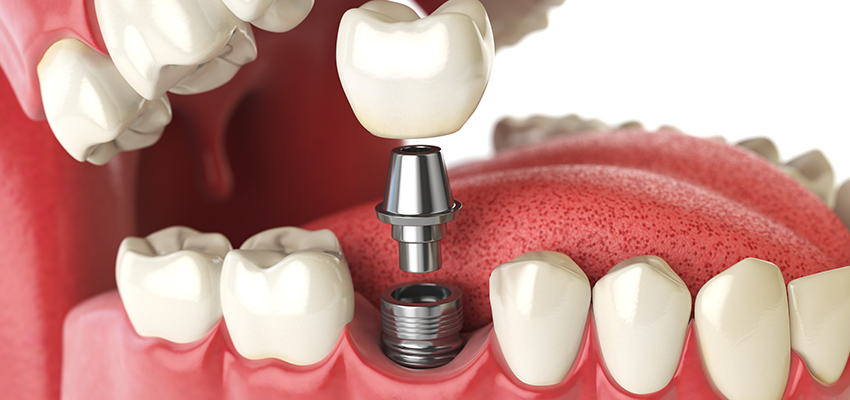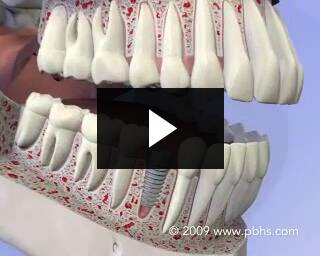
DENTAL IMPLANTS
Seattle Dental Implants & Prosthodontics – Seattle, WA
If you lose one or more teeth due to periodontal disease, or another cause, there are ways to fix this. With a success rate of nearly 98% (Straumann® Implant Systems) dental implants are changing the way people live! Designed as the closest possible replacement to natural teeth, implants help to minimize the bone resorption (deterioration) process, increase stability, preserve the jaw bone and maintain facial structure. Having been scientifically tested and documented for over 50 years, the recipient of an implant gains the ability to eat virtually anything and can smile with confidence, knowing that teeth appear natural and that facial contours will be preserved.
What are Dental Implants?
Dental implants are designed to provide a foundation for replacement teeth that are the best and most natural-looking substitution to ordinary teeth at this time. Implants are small titanium posts (screws) that are surgically placed into the jawbone where teeth are missing. These metal anchors act as substitutes for the missing tooth root.
During healing, the bone slowly integrates with the titanium screw, creating a strong bond and foundation for construction of a permanent restorative option. Small posts that protrude through the gums are then attached to the implant (abutments) which allows the crown to then be attached to the implant, or in other cases, an osseo-integrated implant bridge (OIB), fixed partial bridge or overdenture.
The Surgical Procedure
Once Dr. Goll has determined that you are a candidate for an implant(s), a pre-operative appointment will be required where our staff will either take a single x-ray or a panographic film to determine the appropriate size of implant needed. We will also go over instructions and we can prescribe a mild sedative for those particularly anxious about the procedure. For most patients, the sequence of events for a dental implant involves the extraction of the decayed tooth followed by the surgical placement of the implant itself. Sometimes, for patients lacking sufficient bone structure, bone grafting is required during the surgery, or in other cases, prior to the surgical placement of the implant(s) to enhance stability and success.
The surgery itself is an out-patient procedure performed in our downtown location where we are fully equipped with state-of-the-art technology and instruments in a relaxed setting. The length of the surgery will be dependent on what work needs to be done including how many implants are to be placed. We encourage our patients to bring music to listen to if they would like as a means to pass the time. We are also more than happy to call your ride once your procedure is over.
After the surgical procedure is completed, healing time averages between 6 weeks and 6 months where you may wear a temporary prosthesis to fill the gap of the missing tooth (teeth). While healing, you will come in periodically so Dr. Goll can check on the osseointegration of the implant to the surrounding bone. This will help determine when you are ready for the restorative portion of the treatment.
Once sufficient healing has occurred, Dr. Goll will begin the steps necessary for restoration. He will begin by uncovering the implant and placing a small healing abutment (collar) over the implant. Depending on the type of restoration Dr. Goll and you have determined, will dictate the following sequence of events and type of restoration being done.
What Types of Prostheses are Available?
A single prosthesis (crown) is used to replace one missing tooth – each prosthetic tooth attaches to its own implant. A partial prosthesis (fixed bridge) can replace two or more teeth and may require only two or three implants. A complete dental prosthesis (osseo-integrated implant bridge or overdenture) replaces all the teeth in your upper or lower jaw. The number of implants varies depending upon which type of complete prosthesis (removable or fixed) is recommended. A removable prosthesis (overdenture) clamps to a bar or ball and socket attachments, whereas a fixed prosthesis is permanent and removable only by Dr. Goll.
Thanks to Dr. Goll’s advanced training in surgical placement of implants and their restoration, our office is able to provide both services without the need to see another dentist to complete the treatment.


